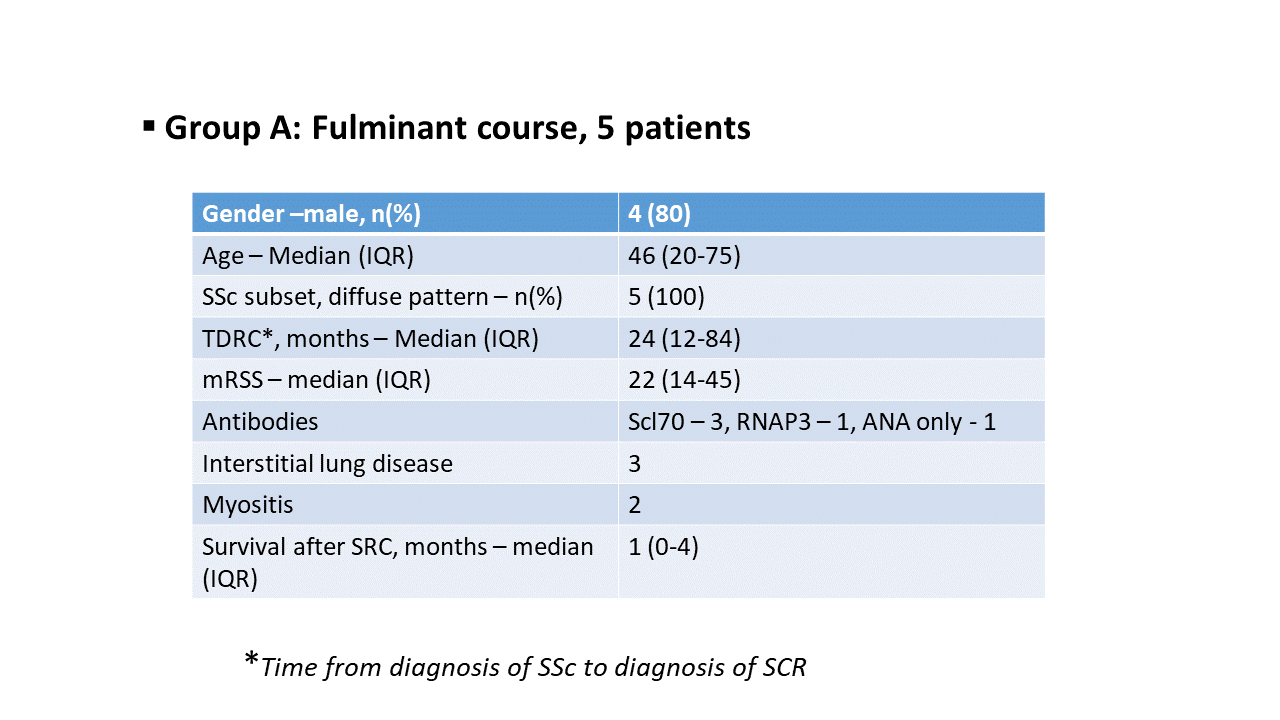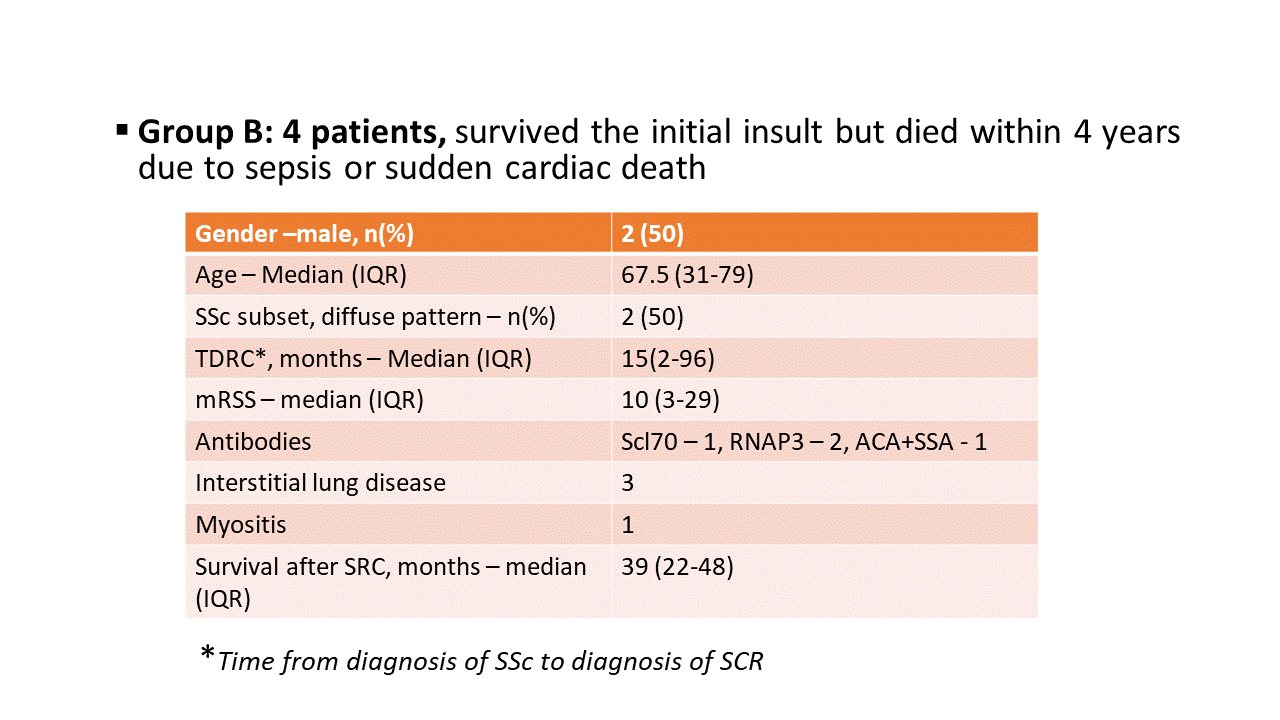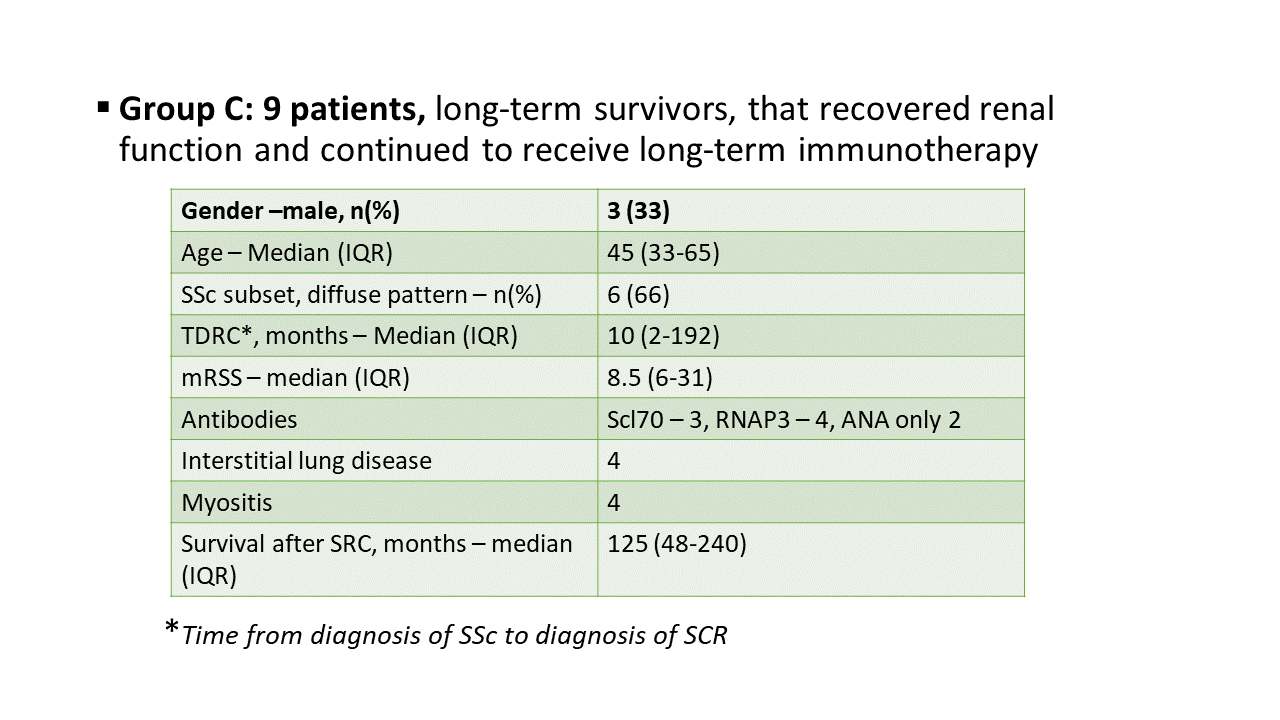Session Information
Session Type: Poster Session B
Session Time: 10:30AM-12:30PM
Background/Purpose: Scleroderma renal crisis (SRC) is a life-threatening complication that occurs in a minority of patients, particularly those with diffuse cutaneous systemic sclerosis ( SSc). The hallmark features of SRC include malignant hypertension and acute renal failure. SRC is associated with high mortality rates within the first year. Risk factors for SRC include diffuse skin involvement, especially if it progresses rapidly. Early intervention with ACE inhibitors has significantly improved outcomes. The role of immunosuppression in managing SRC is unclear.
Our aims were to review the clinical characteristics of SRC pts, the immunosuppressive regimens and to identify the patient trajectories and determine associations between the immune therapy and clinical course.
Methods: Review of a prospectively maintained database of 460 SSC patients. Descriptive statistics.
Results: Nineteen pts were diagnosed with renal crisis according to criteria, between 2003 and 2023. All patients were treated with ACEI. One recently diagnosed SSc patient with SRC was not included in the statistics due to short-term follow-up. Three different patient trajectories can be described:
Group A: Five patients with a fulminant course that died within 1 (0-4) months from the onset of the renal injury (4 males, median (IQR) age 46(20-75), time from diagnosis of SSc to diagnosis of SCR (TDRC) 24 months (12-84), mRSS 22(14-45)). Four of them received intensive immunomodulatory treatment (for severe skin, lung and/or muscular involvement), without significant clinical improvement.
Group B: Four patients that survived the initial insult but died within 4 years due to sepsis or SCD (2 females, median (IQR) age 67.5 (31-79), TDRC 15(2-96) months). The 2 female patients had limited SSc pattern and were on dialysis, without renal recovery, none of them received immunomodulatory treatment. The 2 male patients had severe diffuse SSc with lung and cardiac involvement, received rituximab+/-cellcept, one of them discontinued dialysis after 14 months due to renal recovery, the other one had a minor and transient renal failure.
Groups C: Nine long-term survivors, that recovered renal function and continued to receive long-term immunotherapy (6 females, median (IQR) age 45 (33-65), TDCR 10 (2-192) months, mRSS 8.5 (6-31). Three of the female patients had limited SSc pattern and SRC was the 1st presentation of disease.
Three male patients with poor prognostic features that were treated with rituximab had an unusual benign course of SRC.
Remarkably 3 pts developed SRC more than 6 years after a diagnosis of diffuse SSC, one in each group, in 2 of them it occurred after discontinuation of immunomodulatory treatment.
Conclusion: Awareness to renal crisis should not wane after 5 years. Different patient trajectories may occur. The mortality rate at 6 months, in our cohort was 25%. The survival at 3 years (among the survivors of the initial insult) was 92%. Up to 15% of renal crisis cases may appear after more than 6 years, particularly in patients with high morbidity. The immunomodulatory treatment might have a beneficent impact on survival.
To cite this abstract in AMA style:
Dolnikov K, Toledano K, Braun M, Markovits D, Giryes S, Tavor Y, Balbir-Gurman A, Braun Moscovici Y. Scleroderma Renal Crisis – Different Phenotypes and Patient Trajectories [abstract]. Arthritis Rheumatol. 2024; 76 (suppl 9). https://acrabstracts.org/abstract/scleroderma-renal-crisis-different-phenotypes-and-patient-trajectories/. Accessed .« Back to ACR Convergence 2024
ACR Meeting Abstracts - https://acrabstracts.org/abstract/scleroderma-renal-crisis-different-phenotypes-and-patient-trajectories/



